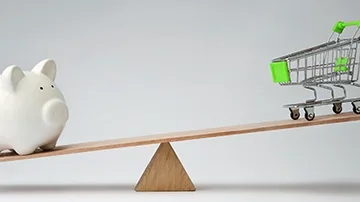The Lifelong Learning Plan: Making your RRSP work harder for you.
25 août 2022

When Canadians have children, there is a great opportunity to start investing in a Registered Education Savings Plan (RESP) to get a head start on paying for post-secondary education that can run into the tens of thousands while gaining interest.
But for adults who are considering a new career, or elevating their education, paying for school can prove to be difficult. As adults with multiple other expenses to worry about, such as rent or mortgage, car payments, accumulated debt or the cost of raising children, taking on another debt for continuing education might seem daunting or even impossible.
There is a solution to this predicament. Canadians have the option to borrow from their Registered Retirement Savings Plan (RRSP) to pay for school.
Enter: The Lifelong Learning Plan.
Under the Lifelong Learning Plan, Canadians are able to fund their education or training through their existing RRSP. This way, they aren’t taking on a new debt with high interest rates attached (such as school loans or credit cards), but rather borrowing from money they have already been saving, and which has been collecting interest over the years as well.
How does withdrawal work?
Through this government program, you can temporarily withdraw money from your RRSP to pay for full-time education or training for yourself or your spouse or common law partner. You can withdraw up to $10,000 per year up to a total of $20,000, but it must be paid back within 10 years. If you don’t repay it on time, the money will be considered income and you’ll have to include it on your tax return.
There is no limit to how many times you can do this. Once you pay back the money you borrowed, you can withdraw under the plan again.
How do taxes and interest work on this money?
The beauty of this program is twofold: you’re not paying interest or taxes on it, while also using pre-taxed money to begin with. Since you’re borrowing money from yourself that you will pay back, you don’t have to pay interest or income tax on the money you’re using. But, you can’t also claim a deduction for the amounts you repay. And since you aren’t taxed on the money you contribute to an RRSP, you’re paying with untaxed money which kind of feels like a bonus.
As long as you're still in school, you don’t have to start paying the loan back until 5 years after your first withdrawal. You then have ten years to pay it back. And, as you pay back the borrowed money, you can also contribute more to your RRSP, you just have to designate how much is going towards your debt and how much is going towards investing. You can deduct the invested amount from your income tax as a regular RRSP contribution.
Who qualifies for the Lifelong Learning Plan?
The checklist is short:
- You must be a Canadian resident and enrolled full-time in a qualifying educational program at a designated educational institution, or received an offer to enroll.
- The program must run for at least three consecutive months.
- You must spend at least 10 hours a week on course work.
There are no limits to the number of times you can use the Lifelong Learning Plan in your lifetime. Once you pay back what you owe, you can take out another LLP withdrawal.
H&R Block Tax Experts know it all when it comes to student tax filing. If you need help, you can choose from one of four convenient ways to file: File in an Office, Drop-off at an Office, Remote Tax Expert, or Do It Yourself Tax Software.



